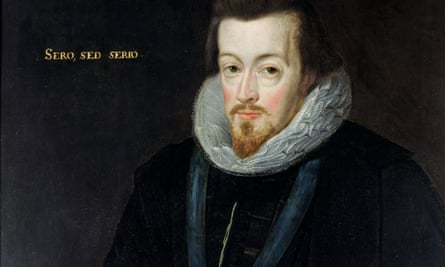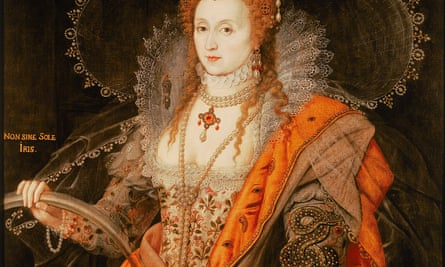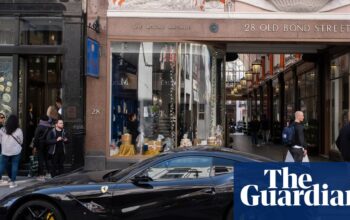For more than a century, it lay undisturbed in the National Archives: a single sheet of paper, headed The names of the Intelligencers, with the power to unveil a hidden network of secret Elizabethan spies.
Now, the 428-year-old secret dossier of Robert Cecil, spymaster to Elizabeth I and the man who discovered the 1605 Gunpowder Plot, has been pieced together using this key document. It reveals how Cecil set up and used a clandestine espionage network to spy on European monarchs for the English throne.
The network was so extensive that the historian Stephen Alford – who has been hunting down Elizabethan spies and painstakingly reconstructing Cecil’s illicit files about each “intelligencer” ever since he found the list in the archives nearly 15 years ago – thinks it was “the first properly organised secret service” in England.
“There were lots of names listed – some I recognised, people in or close to the privy council of Elizabeth I, and lots I didn’t know. Eventually, I realised that the numbers next to their names were folio numbers and that this was really a contents page. That was a lightbulb moment,” said Alford, professor of early modern British history at the University of Leeds. He has written a book on his discoveries, All His Spies: The Secret World of Robert Cecil, which is being published by Penguin. The previously overlooked document, which Alford thinks Cecil began to write in 1596, had been placed in a “miscellaneous” folder by Victorian archivists.

“I think I was probably the first scholar to take an interest in it,” said Alford. “The Victorians had a habit, where if they came across papers that didn’t make sense to them, that were a little mysterious and couldn’t be filed away in a neat and tidy way, they would scratch their heads and then stick them in a miscellaneous folder and ignore them. And that’s where historians now find really interesting stuff.”
He began scouring the archives for any paper which looked relevant and had “a little number in the corner” that matched the intelligencer’s number on the contents page. “I just had to hope that the edges of the paper hadn’t been torn. And because the manuscripts were so poorly kept before the 19th century – often stuffed into the chambers in the Tower of London – rats and mice got to some as well. Often, they were stained, sometimes you see teeth marks. It’s a miracle these papers survived at all.”
As he gradually built up each intelligencer’s folio, he began to see a pattern. “Each was like an office file, I think. It was on hand in Cecil’s office for when reports came in, or to keep a record of payments made.”
Most spies in the 16th century worked for courtiers and were normally “a bunch of rogues”, Alford said, who would turn up haphazardly and volunteer information on an ad hoc basis. The intelligencers on this list were different: “These were serious individuals, a lot of them international merchants, who were on the payroll.”
Previously, scholars thought that Cecil, whose official role was secretary of state to Elizabeth, had a “few spies, here and there”. But Alford’s research indicates that he had an organised network of more than 20 spies, in Lisbon, Calais, Brussels, Seville, Rome, Amsterdam, Scotland, Sweden and unspecified locations elsewhere. “He chose merchants because they travel, can read and write, speak European languages and have networks of their own.”
after newsletter promotion

Each agent was paid to secretly send coded reports to Cecil, who decrypted them using the individual, bespoke cypher in each of their files, which also contained a record of their payments and all their secret communications. “By modern standards, the cyphers are pretty unsophisticated – they’ll suggest different letters for letters of the alphabets, or symbols or diagrams for the Queen or King of Spain, for example,” he said.
After the Spanish Armada of 1588, when the Catholic Philip II of Spain had tried to invade Protestant England and overthrow Elizabeth, Cecil was particularly worried about the possibility of a second Spanish naval attack in the 1590s. “There’s one crew of spies – two brothers – keeping an eye on the Atlantic coast, somewhere near Biarritz, to see if there are any Spanish ships sailing in a new armada or making military and naval preparations. They pretended they were shipping contraband goods between France and Spain, but actually they were going into ports and making reports on naval activity, counting ships and working out what was going on.”
The handwriting in the different files indicates that Cecil relied on a small “trusted group of individuals” to help him run his clandestine operation.
“Cecil was running a well-funded, organised system and that makes an enormous difference to how he is able to operate politically – it really gives him proper information, not haphazard news or gossip,” said Alford. “It’s the first English secret service.”
Source: theguardian.com


